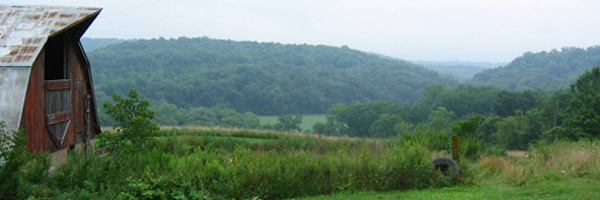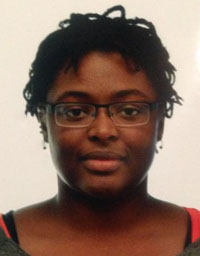
ECOLOGY & CONSERVATION BIOLOGY
IN THE MILLER LAB

ECOLOGY & CONSERVATION BIOLOGY
IN THE MILLER LAB
Curriculum Vitae (PDF)

Education
B.S., Biology, Northeastern Illinois University (2011)
M.S., Biological Sciences, Chicago State University (2013)
Research Interests
In the past 40 years, numerous research has been conducted in order to understand the ecological mechanisms that have resulted in the emergence of Lyme disease. The causative agent of this zoonosis is the pathogen Borrelia burgdorferi which is transmitted via the black-legged tick Ixodes scapularis. The tick has a multiple hosts, some of which are reservoirs for B. burgdorferi resulting in the pathogen transmission. This system is inherently complex with much still unknown due to the presence of multiple actors that influence the abundance of the tick and prevalence of the pathogen. Lyme disease cases have continued to rise therefore I am interested in using a community approach to model the tick-pathogen-host dynamics as a way to identify significant components involved in the invasion of the tick and establishment of the pathogen.
Personal Interests
I have a variety of interests that range from reading supernatural fiction and writing stories and poems (I’ve self-published a book- “The Dark Kingdom”) to outdoor adventures, such as traveling, hiking, backpacking, camping. When not at either of these extremes, I engage in weight lifting, playing soccer or participating in a local mud/obstacle race. I absolutely love music and you will no doubt always catch me listening to something.
Project
A Community Modeling Approach to Understanding the Ecology of Lyme Disease
Select Publications
Halsey, S.J., S. Cinel, J Wilson, T. Bell, and M. Bowles. 2017. Predicting Population Viability of a Monocarpic Perennial Dune Thistle Using Individual-Based Models. Ecological Modelling. 359:363-371. 35:52-59.
Halsey, S.J., T. Bell, and M. Bowles. 2017. Initial transplant size and microsite influences transplant survivorship and growth of a threatened dune thistle. Ecological Restoration. 35:52-59.
Nelson, S.B., J.J. Coon, C.J. Duchardt, J.D. Fischer, S.J. Halsey, A.J. Kranz, C.M. Parker, S.C. Schneider, T.M. Swartz, and J.R. Miller. 2017. Patterns and mechanisms of invasive plant impacts on North American birds: a systematic review. Biological Invasions 19(5): 1547-1563.
Halsey, S.J., T. Bell, I. McEachern, and N. Palvovic. 2016. Population-specific life histories in restoration contribute to metapopulation viability. Ecosphere. 7:e01536
Halsey, S.J., T. Bell, I. McEachern, and N. Palvovic. 2015. Comparison of reintroduction and enhancement effects of metapopulation viability. Restoration Ecology 23:375-384.
Bowles, M., S. Halsey, J. McBride, and N. Pavlovic. 2015. Grassland-forest transition in the Prairie Peninsula region of northwest Indiana as recorded by the U.S. Public Land Survey (1829-1835). Report to the Indiana Department of Natural Resources, Lake Michigan Coastal Program. The Morton Arboretum, Lisle, Illinois.
Select Presentations
Halsey, S.J., and J.R. Miller. Exploring tick-host associations using a spatially and temporally explicit agent-based model. Ecological Society of America, Portland, Oregon. August, 2017. (oral presentation)
Halsey, S.J., and J.R. Miller. Host diversity and population dynamics of Ixodes scapulis populations: A meta-analysis. Ecological Society of America, Ft. Lauderdale, Florida. August, 2016. (poster presentation)
Halsey, S.J., T.J. Bell, S. Cinel, J. Wilson, and M. Bowles. Predicting population viability of a monocarpic perennial dune thistle using individual-based models. North American Congress for Conservation Biology, Madison, Wisconsin. July, 2016. (oral presentation)
Halsey, S.J., and J.R. Miller. Using individual-based modeling to depict tick-environment-host associations. Midwest Ecology and Evolution Conference, Oxford, Ohio. March, 2016. (oral presentation)
Halsey, S.J., T. Bell, and K. McEachern. A metapopulation approach to examining population viability in the Indiana Dunes. Ecological Society of America, Minneapolis, Minnesota. August, 2013. (oral presentation)
Halsey, S.J., T. Bell, and K. McEachern. A metapopulation approach to examining population viability in the Indiana Dunes. Indiana Dunes National Lakeshore Science Conference, Indiana University Northwest, Gary, Indiana. 2012. (oral preseenation)
Halsey, S.J. A metapopulation approach to examining population viability in the Indiana Dunes (Progress Report). Chicago State University Department of Biological Sciences Research Seminar Series, Chicago State University, Chicago. Illinois. 2012. (oral presenation)
Jacobs, K.A., S. Kirt, L. Jackson, and S. Halsey. Prairie education, research and management at Chicago State University. Schulenburg Prairie Symposium, Morton Arboretum, Lisle Illinois. September, 2012. (poster)
Contact
Program in Ecology, Evolution, & Conservation Biology
University of Illinois
W411 Turner Hall
1102 S. Goodwin Ave.
Urbana, IL 61801
shals3@illinois.edu